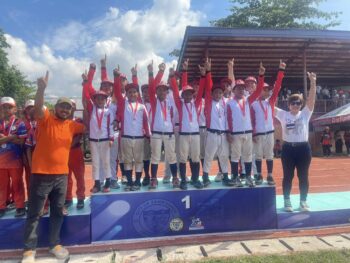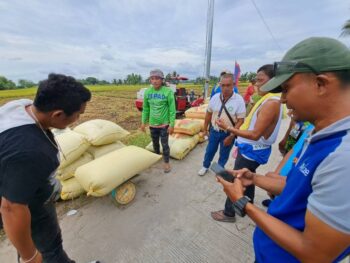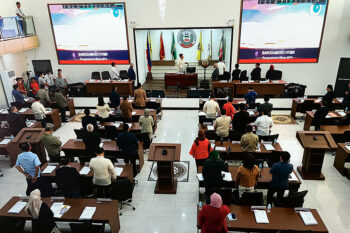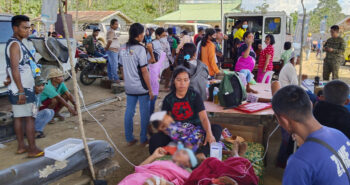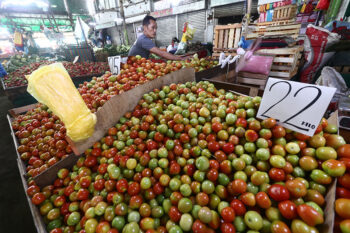Three “wise” men at the top of the political power structure of the Republic of the Philippines: will it truly make a difference for the Mindanawons who have been pushed to the margins in the life of this Republic which for so long was ruled by Manileños and the northerners of these islands? In six years’ time (assuming there will be no radical change in the cast of characters at the top tier of the State bureaucracy…), will the Moro and Lumad peoples of Mindanao, along with the descendants of migrant settlers – the women and men landless peasants, agricultural workers, fisherfolk, industrial laborers, urban poor vendors and other disenfranchised peoples – finally enjoy justice and peace? Will its ecological system be safeguarded from further destruction? Will the Land of Promise tag of the yesteryears return but for the good of the entire Republic? On our knees we pray that all will be well even beyond 2022!
These were my immediate thoughts as I saw President Rodrigo Duterte (President of the Republic from Davao City), Senator Koko Pimentel (Senate President from Cagayan de Oro City) and Representative Pantaleon Alvarez (Speaker of the House of Representatives from Davao del Norte) seated at what could have been the top-most tier inside the Congress Hall during the President’s State of the National address on Monday, 25 July 2016.
The sight of the three of them together is truly historic! If the Republic was inaugurated in 1898, it is now 108 years old. And it is only at this juncture of the Republic’s history that all three top positions of the State bureaucracy are taken by Mindanawons through a political process that represents “the people’s will.” I would not have been surprised that as they chatted before the formal ceremony began, that they spoke the main language of Mindanao – Cebuano-Bisaya. I would not have been surprised if the words that the President blurted out to his two companions at this revered spot were: “Nag-unsa man ta dinhi Bay?”(What are we doing up here, friends?)
Hardly any one among the commentators and public-opinion makers – who are mostly from and are based in Metro Manila – has alluded to it but I have a hunch that a number of those who never liked President Rodrigo Roa Duterte since he launched his candidacy and until now is because he is “dili ingon natu” (literally, not like us). It is no secret that there are many ways that Manila imperialism is manifested; a stark one is where nothing good comes out of the province. No wonder we have the label – “promdi” with its very pejorative nuance.
Well, sorry folks in the imperial city – your days are gone. Or at least for the next six years! I do not intend to sound as if I see nothing good could come out of Manila. My mother grew up in Tondo and until she died, she did have good memories of Manila in her youth. I spent almost a decade of my life studying there and there are spots in the metropolitan city that I do treasure in my heart. But there is truth to Manila imperialism; a center can oftentimes not only push the periphery to the margins, but exclude those beyond its borders.
And now comes these three wise men from the periphery of the Republic, from Mindanao who for so long did not figure too much in the decision-making that matters to the life of the Republic. But even as I luxuriate at this historic sight while watching President Duterte’s State of the Nation Address (SONA), I, nevertheless had worries, fears, anxieties even as I – along with tens of thousand other Pinoys – enthusiastically embraced the words coming out of the President’s mouth.
Having spent most of my life in Mindanao seeking ways to do my share to create spaces of justice, peace and integrity of creation and humbly aligning myself with the most abandoned, my heart leapt with joy as this President declared that he will be on the side of “his people, the people of this country” and most especially the weak, the vulnerable and abused by the rich and those in authority. He will make sure to correct the historical injustice committed against the Moro people, that the Lumads will be able to protect and develop their ancestral domain, that there will be no more widows and orphans caused by wars, that the urban poor settlers’ houses will not be demolished unless there are clear relocation sites, that OFWs will not have to sleep on the floors of malls waiting for their passports processed, that women will have access to the benefits of the RH law, that there will no longer be trafficking even as the Magna Carta for Women will be crafted throughout the country, that taxes will be cut down, that there be food assistance to the hungry, etc. etc.
It is quite a list. I listened intently as the President made these promises and I realized that if all these will come to pass in Mindanao – which hopefully will be considered priority area for genuine development – the southern islands of the Republic can once again be tagged a Land of Promise. And this time, such a promise have a chance to be fulfilled!
But try as much to be optimistic about the years towards 2022 and beyond, I could not help but intuit dark clouds hovering above us all in this Republic. The human rights discourse is contentious. Even as I tried to understand what President Duterte meant by human rights as “not be used as a shield or an excuse to destroy our country”, still there is the gnawing fear that the route he is taking can backfire in the end. With Congress’ super-majority blocs at the upper and lower houses, one wonders if a viable opposition is in place that could truly fiscalize. Senator De Lima may be fighting a windmill all by her lonesome self. With media’s wings clipped and despite the FOI-EO, will media soar like an eagle in a landscape that could prove difficult to maneuver? Which brings in the role of the Church. President Duterte speaks of no separation from God and the State; but who is the God he truly believes in? Is it the God of his Nanay Soling? Of Pastor Quiboloy? Or the Deity who he has constructed in his mind all these years?
Still, as a Mindanawon I have seen life from many sides of the margins in seven decades. I never realized that in my lifetime, the center will give way to the periphery. But can this shift truly lead us to a new chapter in Mindanao’s tumultuous history? Dili ba kaha ma-chapter ra sab ta aning lahi na sab nga Chapter? Now, how to translate this?
[Redemptorist Brother Karl Gaspar is Academic Dean of the Redemptorists’ St. Alphonsus Theological and Mission Institute (SATMI) in Davao City and a professor of Anthropology at the Ateneo de Davao University. Gaspar is author of several books, including “Desperately Seeking God’s Saving Action: Yolanda Survivors’ Hope Beyond Heartbreaking Lamentations” and two books on Davao history launched in December 2015. He writes two columns for MindaNews, one in English (A Sojourner’s Views) and the other in Binisaya (Panaw-Lantaw).]


